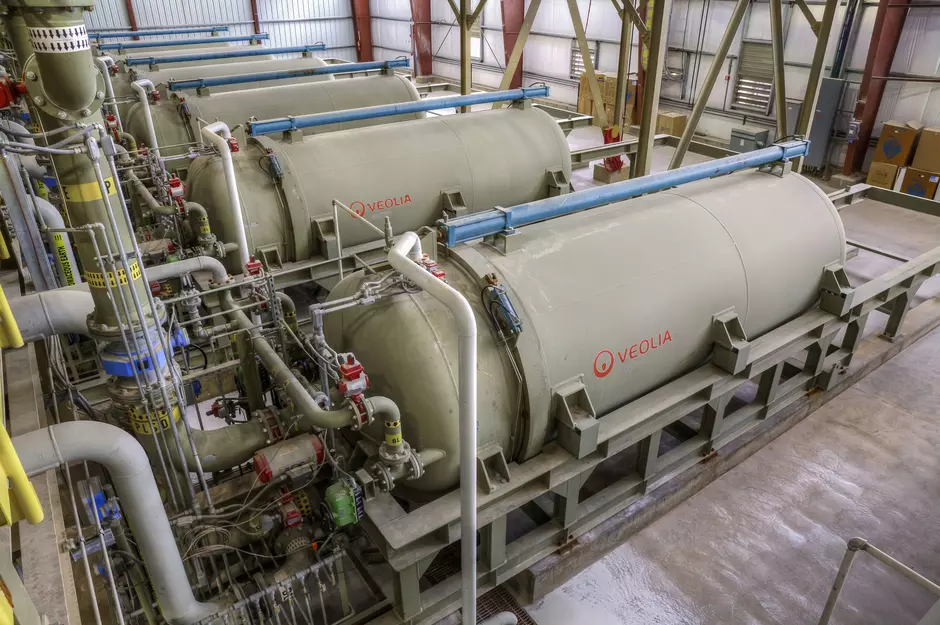Veolia’s precoat filtration and vacuum deaeration technologies help gold producers achieve maximum efficiency in their gold recovery operations. By filtering the cyanide leach solution before zinc precipitation, precipitated impurities that could be carried over from the decantation steps are removed. No more than a trace of oxygen is left, minimizing zinc and cyanide consumption.
With the growth of gold production from mine sites with low-grade ores, leaching operations that distribute sodium cyanide solution on the top of heaps formed from crushed ore have been gaining adoption globally. Today, this is one of the most common extraction methods of precious metals from their ores.
This increasingly popular technique is known as heap leaching. A highly alkaline cyanide solution, thanks to its great dissolving properties, forms a particularly stable complex with a high degree of selectivity for gold and silver when aeration keeps the pulp or solution saturated with oxygen (>7ppm).
After gold is dissolved in cyanide solution (referred to as "pregnant" leach solution), it percolates through the ore and is collected at the bottom of the heap. Next, the recovery stage of the solubilized gold from solution follows in what is known as as the Merrill-Crowe process, the most efficient and inexpensive separation technique of removing gold from a cyanide solution by using zinc dust to precipitate gold from its solution.
The efficient precipitation of cyanide solutions with zinc dust is contingent upon a complete removal of suspended solids, colloidal precipitates and dissolved oxygen. These necessary conditioning steps are achieved by means of thorough clarification with special pressure leaf filters usually coated with diatomaceous earth to produce a clarified solution filtered down to a one micron particle size.
Veolia's Solution
Veolia’s AutoJet (rotating pressure leaf) and Filtra-Matic precoat filtration technologies separate larger metal cyanide complexes (such as zinc cyanide) but allow valuable aurodicyanide anions to pass through.
Dissolved oxygen must then be immediately removed from the solution by passing through a vacuum deaeration column as the filtered pregnant solution typically has dissolved a oxygen content between 6 to 8 parts per million (ppm). Thus, the leach solution is pumped into a vacuum deaerator for removal of oxygen and other gases which typically reduces the oxygen content of the cyanide solution to about 1 ppm or less through the use of a deaeration tower filled with packed media.
Zinc dust is then added to the clarified, deaerated solution which precipitates the gold because zinc has a higher affinity for the cyanide ion than gold. Free cyanide must be present in order for the zinc to dissolve rapidly in a cyanide solution. Therefore it is typical to add NaCN and lead nitrate with the zinc to ensure the presence of free CN.
As gold (along with silver) is precipitated with zinc, this high-solids mixture is then processed with a filter press to capture the precipitated precious metals with a purity that will range between 45% to 85% gold. The gold precipitate is then mixed with fluxes and smelted to form crude and impure bars which are sent to a refinery to remove the copper and silver.




